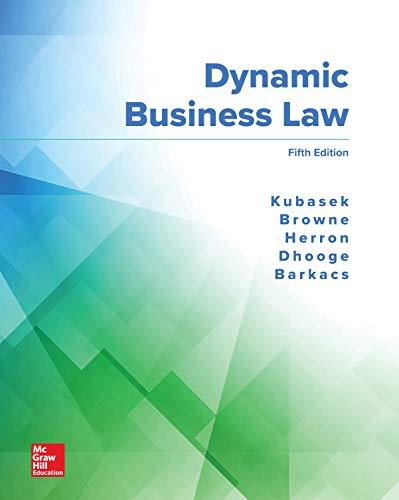In 2004, Lisa Huff was walking during a heavy thunderstorm when a large maple tree split in
Question:
In 2004, Lisa Huff was walking during a heavy thunderstorm when a large maple tree split in two 25 feet above the ground. A large limb from the tree struck Huff, causing serious and permanent injuries. The tree was on property owned by Gerald and Michelina Braho and stood 30 feet from the center of the road and 20 feet from utility lines owned by Ohio Edison, a subsidiary of First Energy. Ohio Edison maintained an easement near the tree, but the tree was outside the easement and had been found not to pose a threat to the power lines during an inspection by Asplundh Tree Expert Company three years prior. Huff sued Ohio Edison and Asplundh, alleging that they were liable for Huff’s injuries for their failure to inspect, maintain, and remove the tree or to warn the landowner and the public of the danger raised by the tree. Ohio Edison maintained that it had no prior knowledge that the tree was dangerous, that it was not negligent, and that it owed no duty to Huff regarding the tree.
The trial court found that Ohio Edison had no “actual or constructive notice of any defects in this tree located on someone else’s property” and that Huff was not a third-party beneficiary under the contract between Ohio Edison and Asplundh. An appellate court reversed in favor of Huff after holding that the contract was ambiguous and could be read in such a way that Asplundh owed a duty to “protect all persons from injury at all times, regardless of when the work is done.” Ohio Edison and Asplundh appealed to the Ohio Supreme Court. How do you think the high court ruled and why?
Step by Step Answer:

Dynamic Business Law
ISBN: 9781260247893
5th Edition
Authors: Nancy Kubasek, M. Neil Browne, Daniel Herron, Lucien Dhooge, Linda Barkacs





